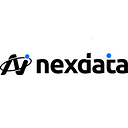When you want to change the channel or adjust the volume while watching TV, and you can’t find the remote control, you can directly use gestures to operate, so you don’t have to worry about finding the remote control. When driving a car, if you hear a bad song and want to cut it quickly, if you need to interact with the touch screen display, the driver must take his eyes off the road, which is potentially dangerous. Using gesture recognition makes driving safer. When using the iPad to watch a drama, the phone suddenly came in at this time, and we used the mute gesture to control the device to mute on the iPad.
These conveniences in our lives benefit from the development of gesture recognition technology. Gesture recognition technology is mainly a technology to identify human gestures through algorithms, through visual detection of key point information of fingers, through the displacement information of key point information of fingers to determine the complex movements of the five fingers of the human body, and then determine the type of gesture.
Gesture Recognition Application Scenarios
● Human Machine Interaction
Gestures replace the traditional keystrokes or mouse clicks as input to control their own computers, which can make the interaction between humans and machines more intelligent and natural, and can directly integrate the experience people have gained in daily life. When applied to interactive activities, the operability in the virtual world can be fully improved, and more complex tasks can be completed in the virtual world.
● Safe Driving
Applying gesture recognition to advanced driver assistance systems can improve driving safety to a certain extent. Drivers can use gestures to control various functions inside the car through ADAS, or change various parameters in the car, so that pay more attention to the road, which can reduce the occurrence of traffic accidents.
● Gesture recognition and Assisted Driving
When looking directly at the road ahead, use gestures to control some system functions, which is easy to use. The gesture control sensor is located on the top of the car in front of the interior rearview mirror. When the hand is stretched above the gear handle, the sensor can recognize the gesture when the height is about in front of the air outlet.
● Sign Language
Sign language is the main way for deaf people to express themselves, but for those who have not been trained in sign language, understanding this language is not easy. Applying gesture recognition technology to sign language cognition will greatly improve the communication between deaf and dumb people and ordinary people.
● Machine Control
Gestures can also be used in the control of intelligent robots. With the development of artificial intelligence, household robots or smart home appliances will gradually spread to thousands of households. Using gesture control instead of traditional button or touch screen control will make users feel more natural.
Gesture Recognition Difficulties
Based on the actual situation, the gesture ecognition task has the following three difficulties.
Numerous types of gestures: Human hands are very flexible and can make many different static and dynamic gestures. The recognition of some similar gestures puts forward higher requirements on the algorithm.
Severe Occlusion: When people make different gestures, it will cause serious occlusion of key points of the hand, and the occlusion will be even more serious when doing two-handed gestures (such as clasped fists), which will cause greater difficulty in feature extraction and invisible point prediction of the algorithm.
Dynamic Blur: Some human-computer interaction scenarios require dynamic gestures, and dynamic gestures will cause a certain degree of dynamic blur, which poses difficulties for gesture recognition algorithms.
About
Founded in 2011, Nexdata is a professional artificial intelligence data service provider and committed to providing high-quality training data and data services for global AI companies. Relying on own data resources, technical advantages and intensive data processing experiences, Nexdata provides data services to 1000+ companies and institutions worldwide.
If you need data services, please feel free to contact us: info@nexdata.ai
